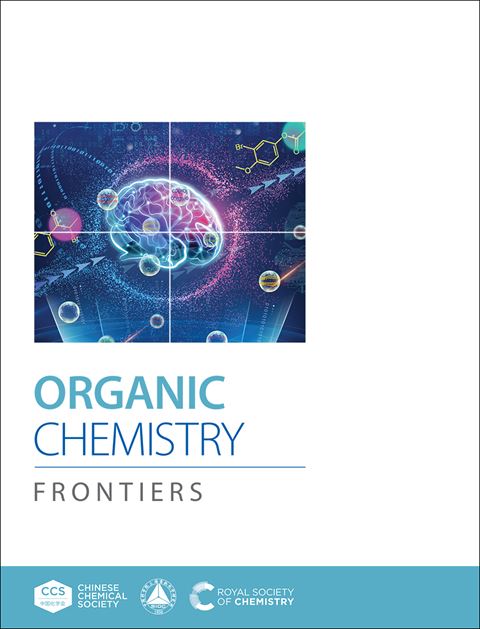Conversion of Phenols to Phosphamides and Sulfonamides through a Sequential Dearomative Functionalization followed by Reductive Coupling Strategy
IF 4.6
1区 化学
Q1 CHEMISTRY, ORGANIC
引用次数: 0
Abstract
Efficient and direct conversion of phenols to arylphosphamides and arylsulfonamides has been achieved using a sequential oxidative dearomative functionalization-reductive coupling strategy. The earlier methods involve use of azides or amines as nitrogen source that have sensitivity and toxicity issues and might generate undesirable impurities in API synthesis. Here, phenol was dearomatized using hypervalent iodine reagent PhI(OAc)2 to generate a p-quinone monoacetal, which was further condensed with hydroxylamine to produce a common intermediate, nitrosobenzene derivative. Nucleophiles like phosphine oxide and sodium arylsulfinate were reacted smoothly with nitrosobenzene through a reductive coupling to derive a series of arylphosphamide and arylsulfonamide scaffolds. The mechanistic studies reveal the role of NaHSO3 reductant during the generation of N-P and N-S bonds.通过顺序脱芳功能化和还原偶联策略将酚类转化为磷酰胺和磺胺类
使用顺序氧化脱芳功能化-还原偶联策略,实现了酚类高效直接转化为芳酰磷酰胺和芳酰磺酰胺。早期的方法涉及使用叠氮化物或胺作为氮源,这些氮源具有敏感性和毒性问题,并且可能在API合成中产生不需要的杂质。在这里,苯酚使用高价碘试剂PhI(OAc)2脱芳生成对醌单缩醛,该对醌单缩醛进一步与羟胺缩合生成常见的中间体亚硝基苯衍生物。氧化膦和芳基亚硫酸钠等亲核试剂与亚硝基苯通过还原偶联反应,得到一系列芳基磷酰胺和芳基磺酰胺支架。机理研究揭示了NaHSO3还原剂在N-P键和N-S键生成过程中的作用。
本文章由计算机程序翻译,如有差异,请以英文原文为准。
求助全文
约1分钟内获得全文
求助全文
来源期刊

Organic Chemistry Frontiers
CHEMISTRY, ORGANIC-
CiteScore
7.90
自引率
11.10%
发文量
686
审稿时长
1 months
期刊介绍:
Organic Chemistry Frontiers is an esteemed journal that publishes high-quality research across the field of organic chemistry. It places a significant emphasis on studies that contribute substantially to the field by introducing new or significantly improved protocols and methodologies. The journal covers a wide array of topics which include, but are not limited to, organic synthesis, the development of synthetic methodologies, catalysis, natural products, functional organic materials, supramolecular and macromolecular chemistry, as well as physical and computational organic chemistry.
 求助内容:
求助内容: 应助结果提醒方式:
应助结果提醒方式:


